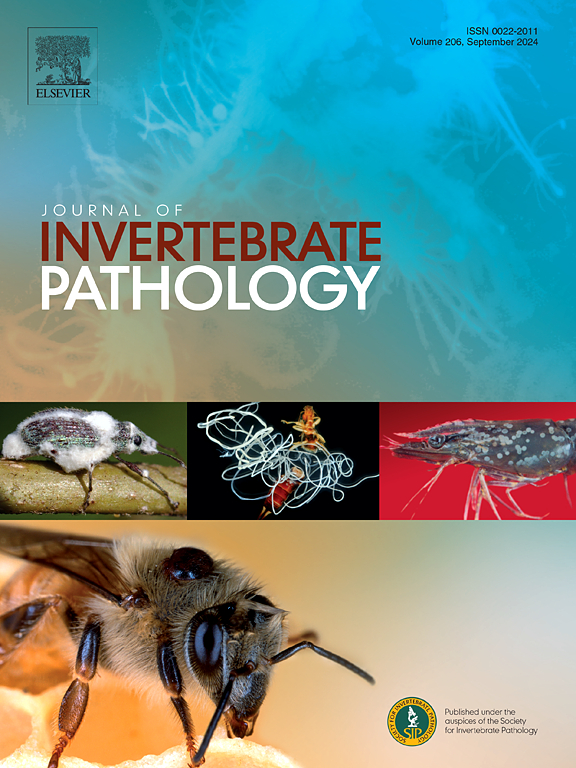Impact of commercial freezing on transmission of Enterocytozoon hepatopenaei
IF 2.4
3区 生物学
Q1 ZOOLOGY
引用次数: 0
Abstract
Enterocytozoon hepatopenaei (EHP) is an emerging pathogen threatening the prawn aquaculture industry globally, due to losses resulting from retarded growth. Since the first detection of EHP in Thailand, EHP has been reported from other countries in Asia and South America. However, the mechanism of EHP spread into new countries and/or areas has not been established. It is uncertain whether infectious EHP can be inadvertently introduced via frozen commodity prawns. Therefore, this study investigated the effect of storage of prawns at commercial freezing temperatures (at or below −18 °C) has on EHP infectivity. We assessed the ability of EHP to cause infection following oral challenge of Penaeus vannamei with EHP-infected hepatopancreas that had been frozen at −18 °C for 0 h, 24 h, 7 days, or 14 days. Our results showed that freezing at −18 °C for 7 days and 14 days further reduces EHP in prawn tissue (hepatopancreas) and inhibits transmission. These findings suggest that freezing prawns at −18 °C for at least 7 days might prevent spread of EHP into new countries via commodity prawns.

商业冷冻对肝芽胞虫传播的影响
肝原肠胞虫(EHP)是一种威胁全球对虾养殖业的新兴病原体,由于生长迟缓而造成损失。自泰国首次发现EHP以来,亚洲和南美洲其他国家也报告了EHP。然而,EHP向新的国家和/或地区传播的机制尚未建立。传染性EHP是否可以通过冷冻商品对虾无意中引入尚不确定。因此,本研究调查了在商业冷冻温度下(低于- 18°C)储存对虾对EHP传染性的影响。我们评估了EHP引起凡纳滨对虾(Penaeus vannamei)感染的肝胰腺在- 18°C冷冻0小时、24小时、7天或14天后的感染能力。我们的研究结果表明,在- 18°C冷冻7天和14天可以进一步降低对虾组织(肝胰脏)中的EHP并抑制传播。这些发现表明,将对虾在- 18°C冷冻至少7天可能会阻止EHP通过商品对虾传播到新的国家。
本文章由计算机程序翻译,如有差异,请以英文原文为准。
求助全文
约1分钟内获得全文
求助全文
来源期刊
CiteScore
6.10
自引率
5.90%
发文量
94
审稿时长
1 months
期刊介绍:
The Journal of Invertebrate Pathology presents original research articles and notes on the induction and pathogenesis of diseases of invertebrates, including the suppression of diseases in beneficial species, and the use of diseases in controlling undesirable species. In addition, the journal publishes the results of physiological, morphological, genetic, immunological and ecological studies as related to the etiologic agents of diseases of invertebrates.
The Journal of Invertebrate Pathology is the adopted journal of the Society for Invertebrate Pathology, and is available to SIP members at a special reduced price.

 求助内容:
求助内容: 应助结果提醒方式:
应助结果提醒方式:


